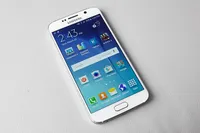Samsung Galaxy S6 vs Apple iPhone 6: Smartphone Face-off
The Galaxy S6 takes on Apple's iPhone 6 in a multi-round battle - and wins by a lot.
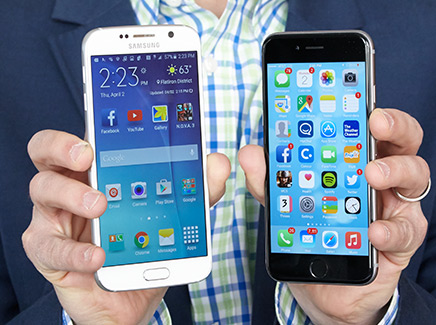
Intro
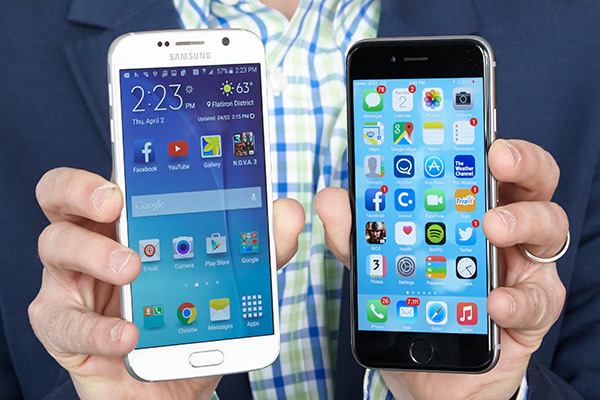
The iPhone 6 and the Galaxy S6 basically have two things in common: They're the smartphone measuring sticks for the rest of the industry, and they represent a fairly big departure from their predecessors. The iPhone 6 finally gives Apple fans a bigger 4.7-inch display, as well as new capabilities, such as Apple Pay. For Samsung, the Galaxy S6 represents a fresh start for the brand, with an all-new, glass-and-metal design (no more plastic!).
But Apple's and Samsung's flagships are totally different in most other ways, from processing power and screen quality to cameras, interface and battery life. I put the iPhone 6 and Galaxy S6 through nine rounds of handset-to-handset combat to name a winner.
Design
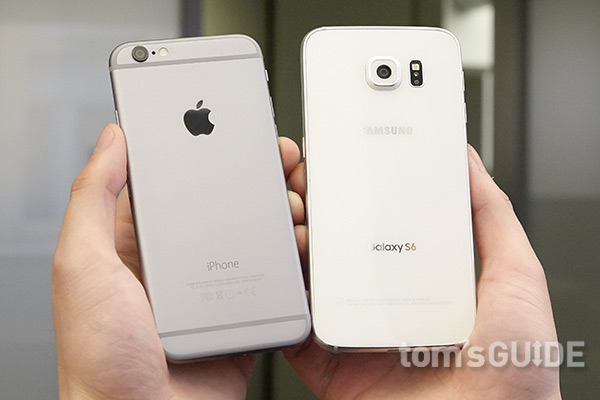
Design has always been a hallmark of the iPhone, and the iPhone 6 maintains that tradition. Made of anodized aluminum, stainless steel and glass, the latest iPhone has rounded edges and a smooth but sturdy body. It's almost too smooth, though, making it feel somewhat slippery. But I do like the way the glass display curves to meet the rest of the chassis, which gives the design a unified aesthetic.
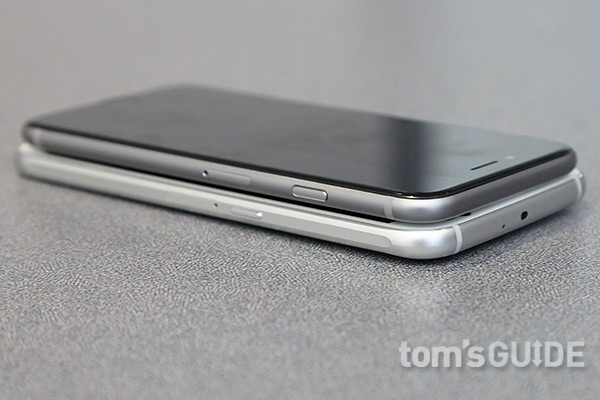
The Galaxy S6 is iPhone-like in some ways, especially the aluminum bottom edge, but I prefer the overall look and feel of Samsung's phone. On the black model, for instance, the Gorilla Glass 4 back appears to change from black to blue depending on how you hold it. There's also a white-and-gold model of the S6, whereas the iPhone 6 comes in either gold, silver or space gray.
Measuring 0.27 inches thick and weighing 4.9 ounces, the Galaxy S6 is about the same thickness but slightly heavier than the 4.6-ounce iPhone 6, but the S6 is remarkably light and thin, given that it has a bigger 5.1-inch screen. However, the S6 has a bigger bump for its camera on the back.
Winner: Galaxy S6.
Sure, Samsung takes some visual cues from Apple, but the combination of glass and metal on the S6 is simply more exciting than the iPhone's design.
Display

This round is not close. Yes, the iPhone 6 has a bright display that's bigger than before (4.7 inches versus 4 inches), but the Galaxy S6's larger, 5.1-inch Super AMOLED panel runs circles around Apple's screen. For starters, you get much higher resolution from Samsung, at 2560 x 1440 pixels, compared to the iPhone 6's 1334 x 750 pixels.
Get instant access to breaking news, the hottest reviews, great deals and helpful tips.
Just as important, photos and videos just look better on the S6, as evidenced by our side-by-side comparison of The Avengers: Age of Ultron trailer. The S6 shows more contrast and detail, especially in Robert Downey Jr.'s face. The iPhone 6 delivers more natural-looking color, but I prefer the more saturated hues from the S6, as well as the superior black levels.
Winner: Galaxy S6.
It's bigger, sharper and more colorful.
Audio

For the Galaxy S6, Samsung moved the speaker to the bottom of the device (the S5's speaker was on the back of the device), and the result is louder, but not necessarily cleaner, audio. The S6 sounded more boisterous when I blasted Caesars' "Jerk It Out." However, the iPhone sounded balanced, with more of a bottom end; the same track on the S6 was harsh.
Winner: iPhone 6
The iPhone 6's audio just sounds better.
Interface
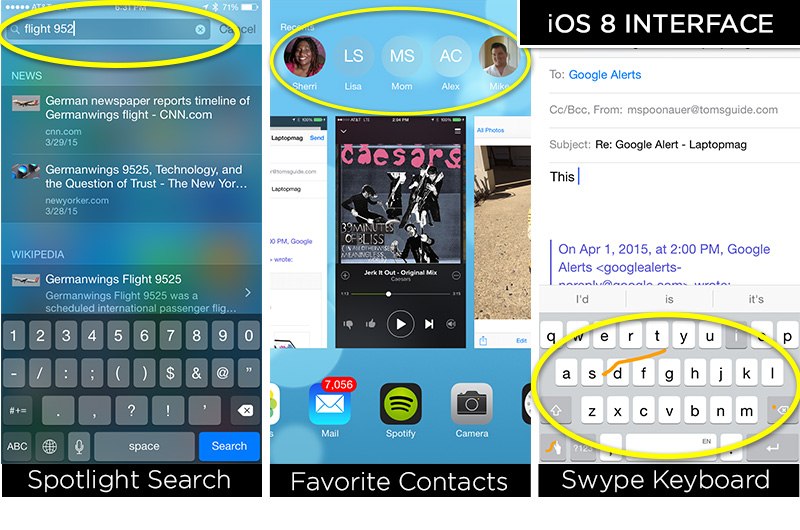
Apple's iOS 8 is supereasy to use and even more flexible. For instance, you can finally swap out the default keyboard for a downloaded one, and there are photo extension apps to help you get more out of the camera. Double tapping the home button provides instant access to your favorite contacts, and swiping down on the display while on the home screen launches the excellent Spotlight search feature for finding apps. But now, Spotlight is smart enough to also include relevant results from Wikipedia, Maps and various news sites.
However, the iPhone's Today screen, which includes Notifications in a separate tab, wastes a lot of space compared to the Galaxy S6's notification drawer. In fact, you can access quick settings and notifications all in one place. On the iPhone, you need to swipe up from the bottom of the display to access settings shortcuts, and there are fewer shortcuts.
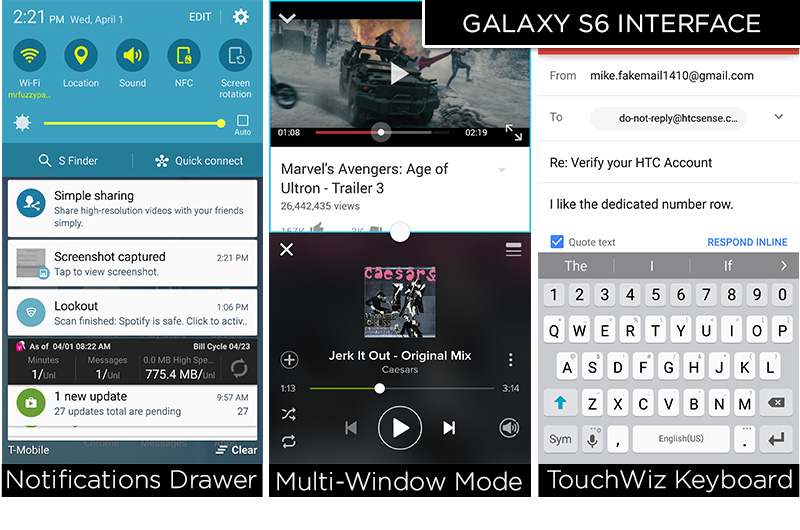
In other ways, Samsung has streamlined its TouchWiz interface (which runs on top of Android 5.0) and made it more user-friendly. From the home screen to the settings menu, there's less clutter than before. Samsung also provides a better built-in keyboard, complete with a number row, and you can run two apps side by side. Plus, you can download custom themes that let you customize the look and feel of the phone.
Winner: Tie.
The iPhone's ease of use is matched by the Galaxy S6's easier-to-access settings and flexibility.
Features

Samsung promises to launch its own mobile payment solution this summer, but in the meantime, Apple is off to a huge head start with Apple Pay. With NFC technology and the Touch ID sensor, you can use the iPhone 6 as a wallet in more than 700,000 locations. Samsung Pay has the potential to work in more places because it supports both NFC and magnetic secure transmissions, but we'll have to wait and see how well it works.
Another unique benefit of the iPhone 6 is Family Sharing, which allows you to share purchases from iTunes, iBooks and the App Store with up to six accounts. Have a Mac or iPad? Thanks to Continuity, you can accept iPhone calls from those devices, as well as send and receive texts. Then there's Siri, which continues to be the smartest voice-enabled assistant (although Google Now is faster).

The Galaxy S6 has several special features of its own, starting with wireless charging. The S6 supports both the Qi and PMA standards, so you can juice it using a wireless charging pad or at businesses that support the tech. (Note that the above image shows the Galaxy S6 Edge but the S6 works with the same accessory). Want to go the wired route? Fast charging allows you to get to 50 percent battery capacity in just 30 minutes.
In addition, Samsung has improved the accuracy of its fingerprint scanner; you place your finger on the home button instead of swiping it, just like on the iPhone. Other notable Galaxy S6 features include a built-in remote control (powered by Peel) and a heart-rate monitor on the back that doubles as a shutter button for the selfie camera.
Winner: Galaxy S6.
Apple Pay and Family Sharing are compelling, but Samsung offers more features for your money.
Performance
Powered by an octa-core Exynos processor and 3GB of RAM, the Galaxy S6 is the first Samsung phone I've tested that exhibited little to no lag. In fact, the S6 closed apps a hair faster, and opened its camera quicker, than the A8-powered iPhone 6. It took both phones about the same amount of time to open the Stormblades game (8.91 seconds for the S6 versus 9.1 seconds for the iPhone 6).
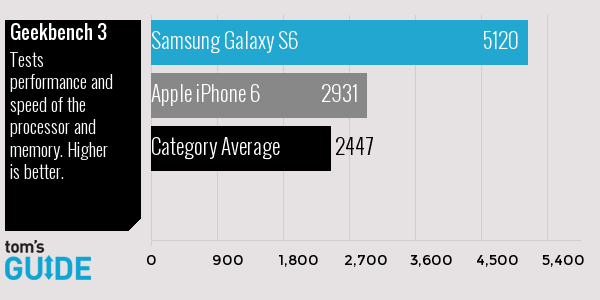
On the benchmark front, the S6 smoked the iPhone 6. When running Geekbench 3, which tests multicore performance, the S6 scored 5,120, while the iPhone 6 notched just 2,931.
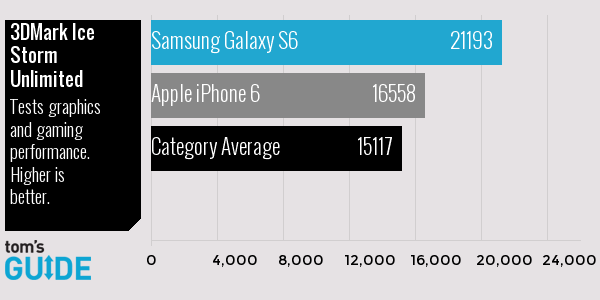
It was a similar story on 3DMark Ice Storm Unlimited, which measures graphics performance; the S6 hit 21,193, compared to the iPhone's 16,558.
I ran another demanding graphics benchmark, GFXBench GL (version 3.1), and the S6 once again came out on top. On the T-Rex 1080p off-screen test, the Samsung delivered 57 frames per second, compared to 42.4 fps for the iPhone 6.
Winner: Galaxy S6.
Samsung's phone is simply more powerful.
Camera
Both Apple and Samsung upped their camera game for the iPhone 6 and Galaxy S6. The iPhone 6 has an 8-megapixel sensor with an f/2.2 aperture, while the S6 has a 16-MP sensor with an f/1.9 aperture, which should give the Samsung an advantage in low light. It does.
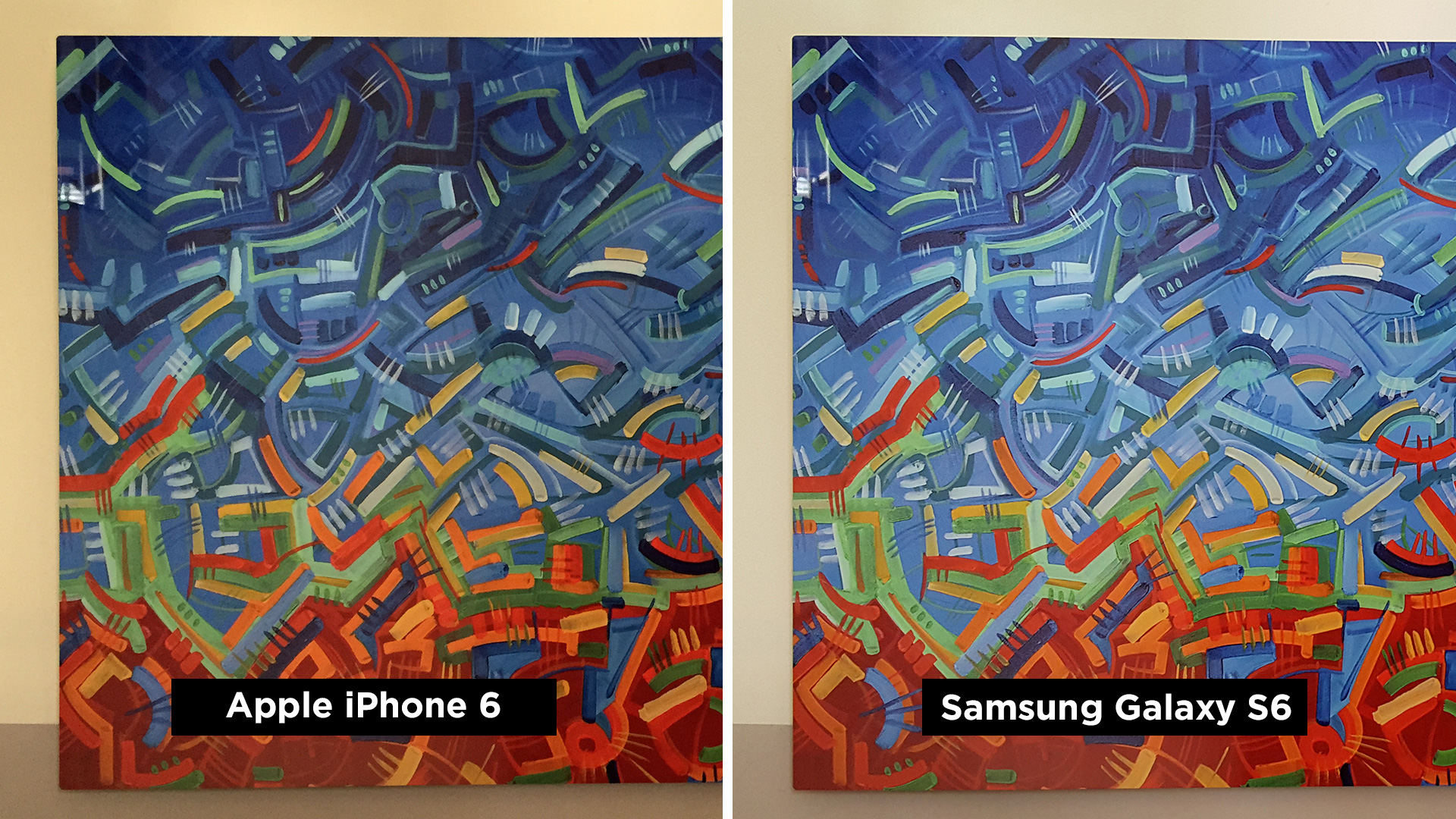
Take a look at this indoor shot I took of a colorful painting. The S6's image looks brighter and crisper, while the iPhone 6 image has a yellow cast.
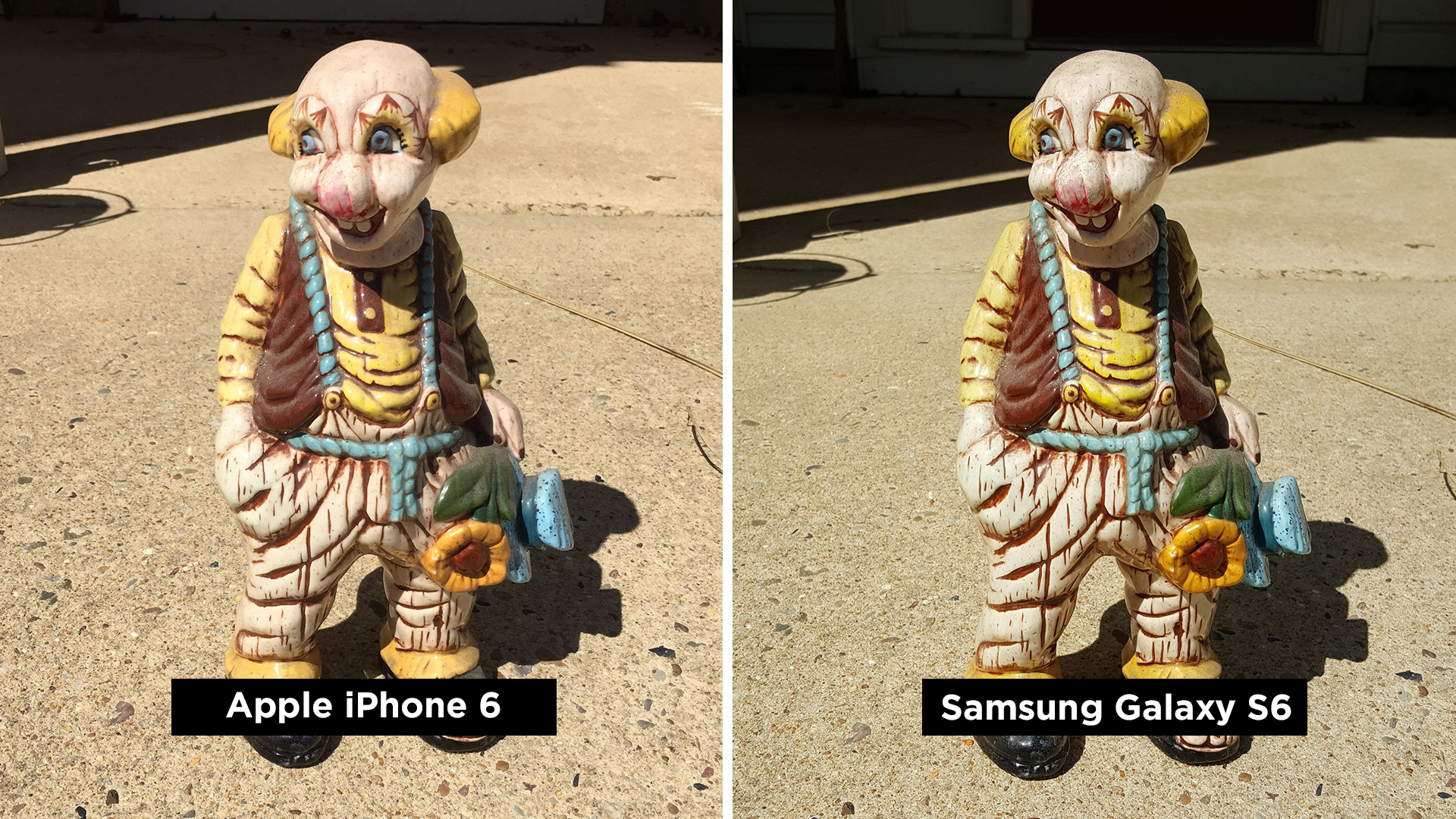
Outdoors, the iPhone 6 delivered more faded, but more natural, hues in a shot of a porcelain clown. (It's OK to be afraid.) However, the S6 picked up details completely missing from the iPhone 6 shot, such as the specks on his head, and it offered better contrast.
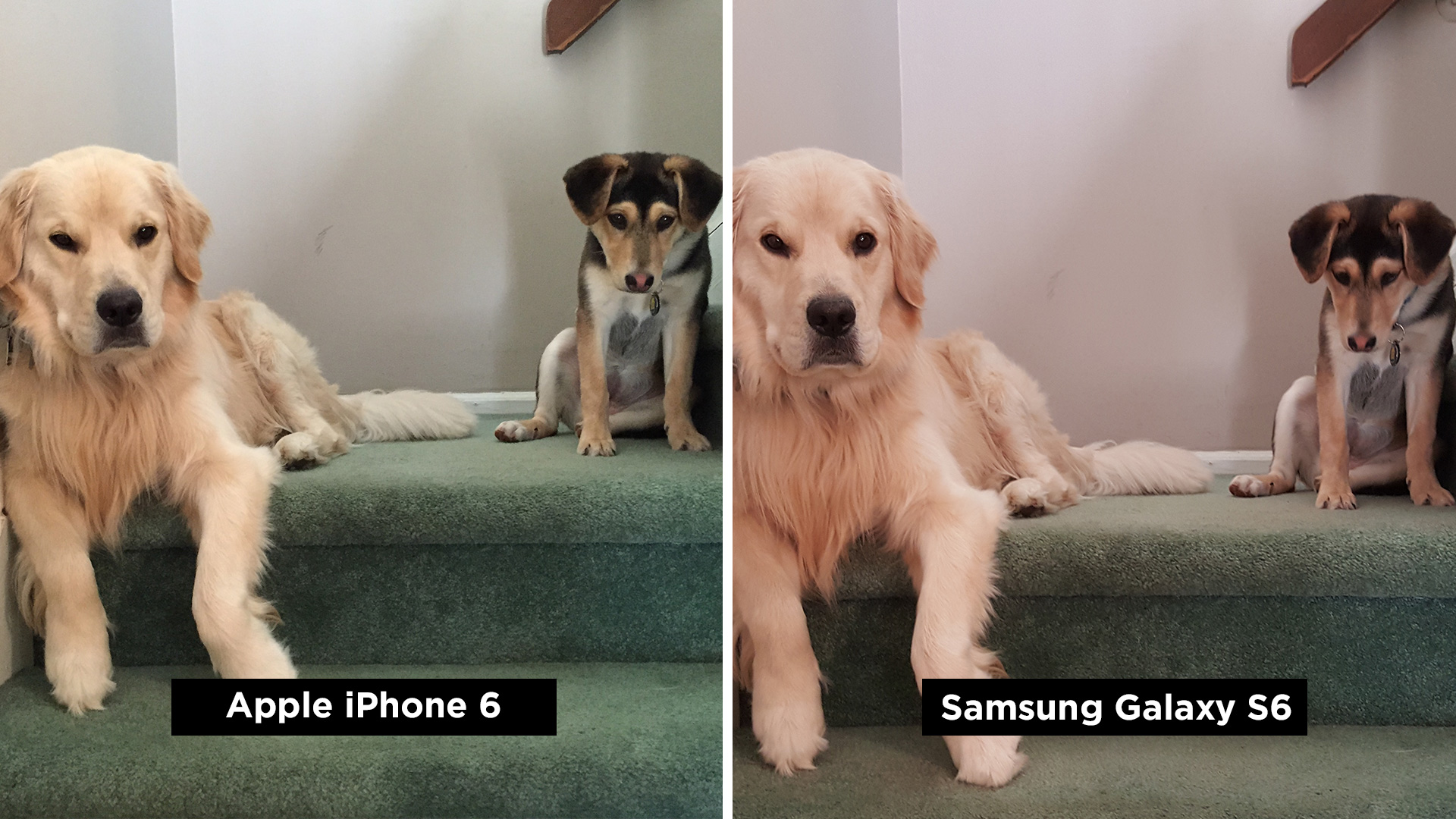
The iPhone 6 fared better in a photo of my two dogs sitting on the stairs with a decent amount of ambient light. It offered better white balance and slightly better contrast.
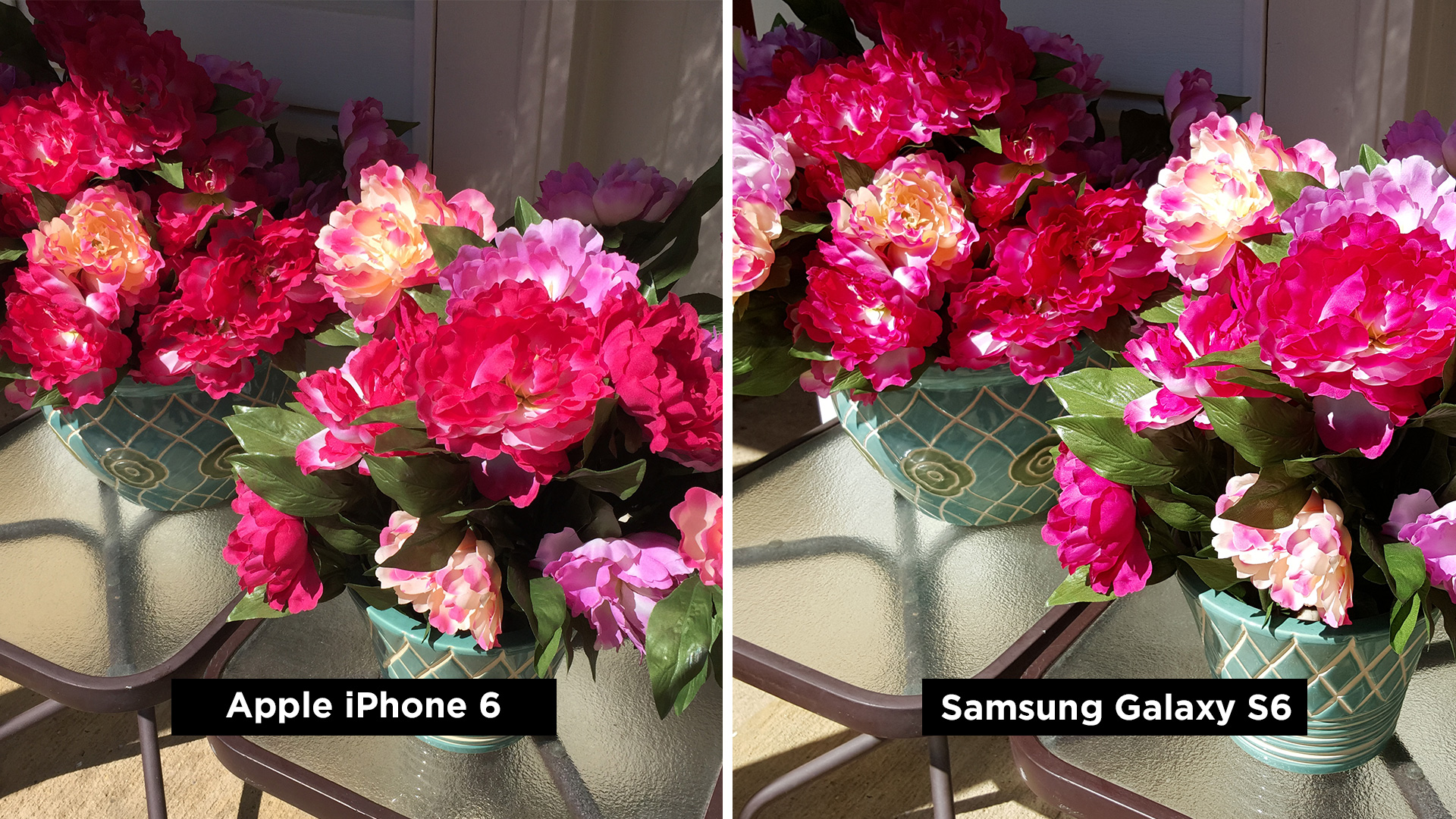
The iPhone 6 also delivered more accurate color in a shot of a bouquet of decorative flowers. It turned out pink, which is what it's supposed to be, versus more violet/purple for the Galaxy S6. But with the S6, you can zoom in more and make out more detail in the vase and (fake) petals.
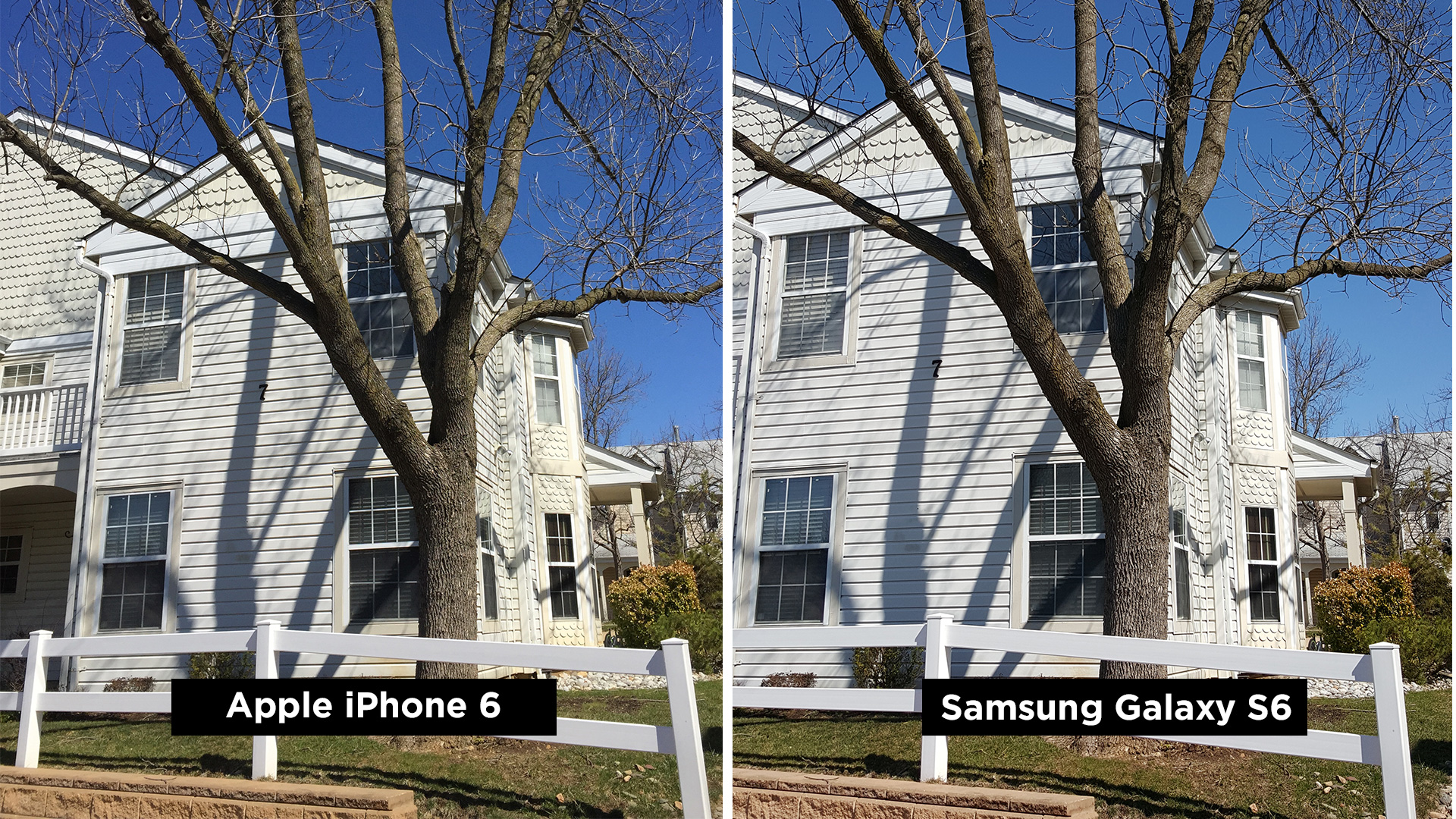
My final test for the back cameras was a tree in front of a building. The S6 offered way more detail, especially in the trunk and surrounding stone wall. See the stone wall: The Samsung shot has a "whiter" (bluer) white and more vibrant-looking grass.

If you're a selfie fan, you'll probably like the S6 more than the iPhone 6. It has a sharper 5-MP front shooter that sports a wide-angle lens. This allowed me to easily capture a photo of my two co-workers and me, with plenty of room to see the environment. The iPhone 6's 2-MP front cam captured warmer tones, but its shot looked a little fuzzy compared to the S6's image.
Winner: Galaxy S6.
Although Samsung's camera sometimes oversaturates colors, its photos are sharper and offer more contrast.
Apps
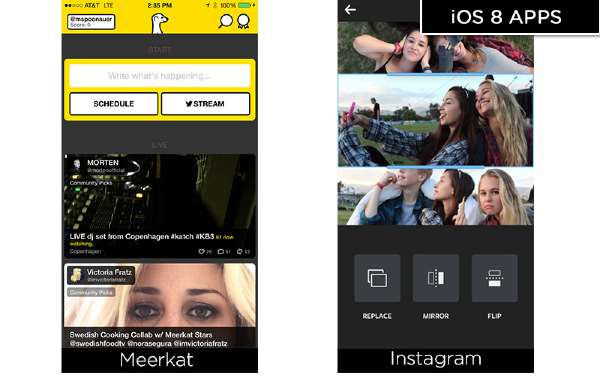
Even though Android now has more than 80 percent of the worldwide smartphone market share, the platform still plays second fiddle to the iPhone when it comes to getting the hottest apps first. Meerkat, Periscope, Clear, Dark Sky, Instagram's Layout and Hyperlapse apps — the list goes on and on. Android offers a lot of great apps, but iOS and the iPhone rule.

As for preloaded apps, both the iPhone 6 and Galaxy S6 offer health apps, but Samsung's S Health measures your heart rate, and can track your runs and your diet. Apple's Health app is more like a dashboard for other apps. Samsung's Milk Music app deserves a mention (powered by Slacker) because it's slicker than iTunes Radio.
What I don't like about the Galaxy S6 is that you have to deal with carrier-installed software, which isn't an issue for the (mostly) bloatware-free iPhone.
Winner: iPhone 6.
Developers continue to favor Apple, which means iPhone owners get the best new apps first.
Battery Life

A part of me doesn't want to declare a winner in this category, because neither the Galaxy S6 nor iPhone 6 offer great endurance. On our battery test, which involves continuous Web surfing over 4G LTE at 150 nits of screen brightness, the Galaxy S6 (on T-Mobile) lasted 8 hours and 32 minutes.
That's more than a full hour longer than the iPhone 6 (7:27 on Verizon), but it's only a couple of minutes longer than the category average of 8:22. The older Galaxy S5 lasted more than 10 hours on T-Mobile's network, which makes me wonder how much power the quad-HD display drains.
Winner: Galaxy S6.
I'll take an extra hour of juice.
Overall Winner

If you're in the market for a smartphone, the choice is clear. The Galaxy S6 wins this contest by a fairly wide margin, at 7 rounds to 3. With the Samsung phone, you get a bigger and better display, faster performance and a sharper camera that performs better in low light, all wrapped up in a design that's even sexier than the iPhone 6.
The iPhone 6 is easier to use and offers better audio quality, but the biggest advantage Apple has over Samsung is the app gap that persists between Android and iOS (not in terms of number, but quality). Overall, though, the Galaxy S6 is the superior smartphone.

Follow Mark Spoonauer at @mspoonauer. Follow Tom's Guide at @tomsguide, on Facebook and on Google+.
Mark Spoonauer is the global editor in chief of Tom's Guide and has covered technology for over 20 years. In addition to overseeing the direction of Tom's Guide, Mark specializes in covering all things mobile, having reviewed dozens of smartphones and other gadgets. He has spoken at key industry events and appears regularly on TV to discuss the latest trends, including Cheddar, Fox Business and other outlets. Mark was previously editor in chief of Laptop Mag, and his work has appeared in Wired, Popular Science and Inc. Follow him on Twitter at @mspoonauer.
-
I never thought I would see the day where TouchWiz gets a check mark. I suppose Samsung got a bit of a wake-up call.Reply
-
Triffid Not impressed with the iPhone? Me Neither! - I have an HTC and if I had to choose an alternative I would go for the Samsung every time.Reply -
K3tch To Stardust Dragon:Reply
At least you justified why you feel this way with a well said, well thought out and, most of all, well substantiated with enlightened reasoning.
-
uglyduckling81 ReplyTo Stardust Dragon:
So impressed with his well thought out comment you mentioned it was well thought out twice. I better go back and read this well thought out comment again since it was so well thought out.
At least you justified why you feel this way with a well said, well thought out and, most of all, well substantiated with a well thought out, enlightened reasoning.
-
Stardust Dragon So basically, what you guys are saying is that ok not allowed to have an opinion?Reply -
greg522 What about all the "Garbage" software the S6 is loaded with. Many other reviewers (WSJ included) mentioned this as a down side. iOS is way better than Samsung OS. Also, you may personal preferences but this should not influence an unbiased review - "but I prefer the overall look and feel of Samsung's phone"Reply -
Homer7 And yet... Samsung are struggling and Apple is still the most valuable company in the world. This article completely ignores many aspects of owning a smartphone such as how well two phones of the same type work together. Apple are way ahead on that one.Reply -
coldspring22 Correction on the review, iphone doesn't have 2MP selfie camera. It has only 1.2MP and that's why selfie photo looks fuzzy.Reply
